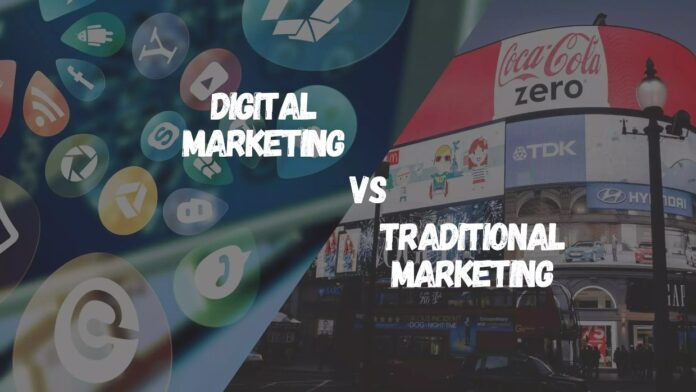Digital channels are where a lot of marketers put their focus, but there’s something to be said for spending money on traditional advertising, like TV commercials as well. Below, we break down some of the things to know about the differences between traditional and digital marketing and advertising currently.
The Benefits of Digital Marketing
Digital marketing broadly references any marketing that’s online. This includes SEO, content, paid media, social media, and email marketing. Digital marketing has become an enormous priority for brands and businesses, especially because of the growth of smartphones and the increase in screen time.
Benefits of digital marketing for a brand include:
- Your results are highly measurable. Marketing analytics are incredibly advanced, and you can see campaign results almost instantaneously. You can also break down your data and analytics into very granular pieces of information. Nearly any content management system or digital platform you use is going to have extensive analytics features.
- Digital marketing lets customers interact with your brand immediately. This significantly shortens the pipeline.
- You can save time and money with digital marketing because of the advanced options for targeting and automation. Targeting your very specific audience is possible in a way with digital marketing that isn’t available in traditional marketing.
- You can get a better ROI because you’re cutting out a lot of the steps and friction that exist with traditional marketing.
- Digital marketing allows you to focus your efforts on where your audience is spending the bulk of their time.
The Benefits of Traditional Marketing
Traditional marketing is ads and promotions that aren’t occurring with digital media. Traditional marketing includes TV commercials, as well as print ads, billboards, radio ads, and telemarketing.
Despite the explosion in digital marketing, there’s something to be said for including traditional marketing in your overall strategy at some level. There is still a significant segment of people shopping offline, and you want to reach them.
Benefits of traditional marketing include:
- Traditional marketing might end up resonating more with older markets. Traditional marketing can feel comfortable and familiar to people who are older, including baby boomers who might have more spending power. They tend to spend around double the time interacting with traditional marketing media compared to millennials.
- There’s a proven sense of success that comes with traditional media, which is why brands are willing to pay so much for coveted airtime, like during the Super Bowl.
- There can be a localized advantage with traditional marketing, especially for time-sensitive or event-related marketing.
What About the Downsides?
While covering the pros of both digital and traditional marketing, there are downsides to including the conversation as well.
With digital marketing, one downside that you have to figure out how to work around is the fact that increasingly internet users have ad blockers. You’re potentially missing all of these people who might never see your banner ads or popups.
Another downside of digital marketing and advertising is how quickly it changes. There are constantly new trends and technologies that are emerging, and your digital marketing strategies have to reevaluate on a regular basis to keep up with the evolution. This can be time-consuming, and your current strategies and approaches can quickly become obsolete.
With traditional marketing, one of the biggest downsides is that it’s expensive. If you, for example, print out postcards and you’re sending them to a local audience, it’s costly, and there’s no guarantee that you’re even getting these out to people who will care about whatever your product or service is.
With traditional marketing, it can also take weeks and often months to see results and start to be able to gather data that will help you make decisions. Unless someone follows up, you may never have any idea of how effective your traditional marketing was.
Is One Better Than the Other?
When comparing digital and traditional marketing, what most brands find works best is to use both rather than assuming one is better and one is worse.
For most people who want to reach a broad audience, digital marketing may be where they put most of their budget, and this still allows them to keep their budget low. You can also collect a lot of information on your audience right away and then apply that to future campaigns.
However, don’t assume there’s no place for traditional marketing. There’s a reason traditional marketing still exists, and that’s simply because it works.
Finally, as you develop your strategy, think about your audience and where they’re most likely to get information because it’s going to be different for every brand.





